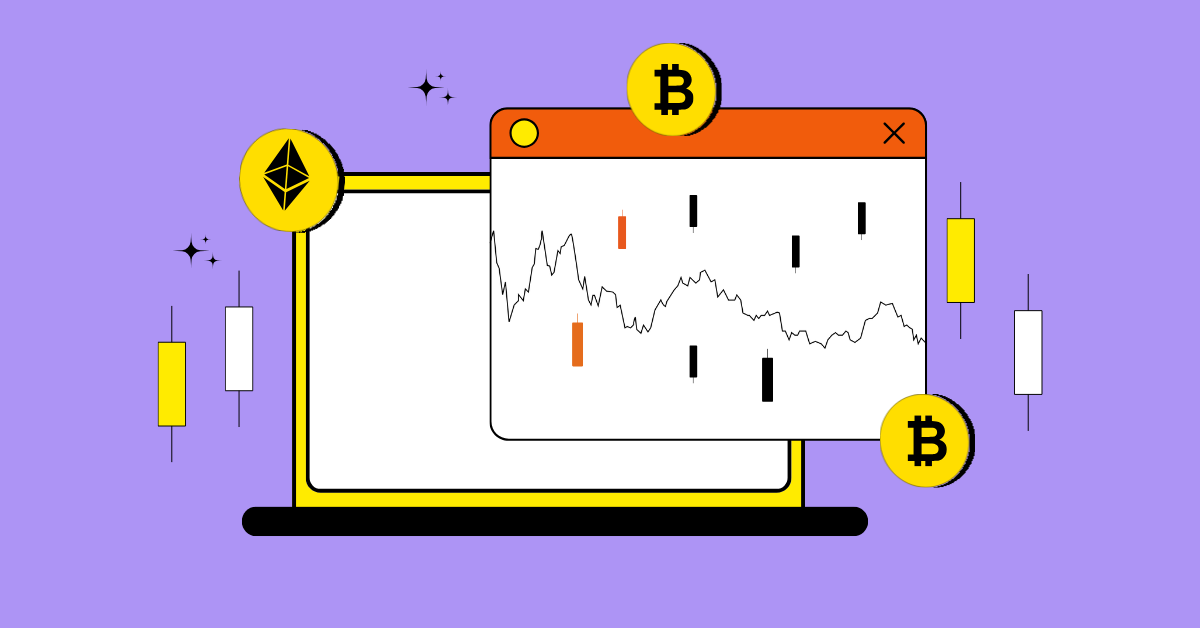
Professional crypto traders always ensure that they have a clear idea about support and resistance points. These points are crucial for successful crypto trading. The primary reason why it is so important is that these points help determine the ideal level for buying or selling the asset. Time to learn this interesting concept in-depth. Are you ready? Let’s start!
Picture the price of a cryptocurrency going down. Now, imagine there is a safety net on a chart.
Support is like a safety net. It is a level where the price tends to stop dropping. It is a point on the chart where the price finds some stability during a downward trend. When the value of the cryptocurrency reaches this support level, traders often expect the price to bounce back up rather than keep falling.
Imagine the price of a cryptocurrency is going up. Now, think of a point on the price chart where it seems like the price struggles to go any higher.
Resistance is a level that acts as a barrer, stopping the price from climbing further. So, when the price trend is going up, it will eventually hit this resistance level, and it is like the value of the cryptocurrency hit a ceiling – it stops increasing.
Resistance and support result from distinct trader behaviours.
Suppose the price of an asset is going down. When the price of a cryptocurrency drops, some traders see it as an opportunity to buy, hoping the price will go up again. Additionally, there are investors who hold onto their crypto even when the value is falling. This collective decision to buy or hold creates a level of support.
Likewise, suppose the price of an asset is going up. When the price of a crypto rises, many traders start selling their crypto because prices are high, and they want to make a profit. As more and more traders sell, it creates a barrier known as resistance.
Identifying support and resistance levels in trading involves three key approaches.
It is drawn horizontally on the chart to mark specific price levels or regions. It connects the highs and lows of a given time period to establish lines. It identifies areas where the price historically faced barriers or found support.
Broadly, there are two types of Horizontal Lines.
| Single Value Lines | Region Lines |
| These lines are drawn horizontally on the chart to represent a specific price level. | These lines are drawn to encompass a range or region of support or resistance. |
| Imagine a line drawn at $50, indicating a level where the price has historically faced support or resistance. | Instead of a single value, picture lines covering the price range from $40 to &60, indicating a broader zone of potential support or resistance. |
It is drawn diagonally to represent directional trends and act as support or resistance. It connects consecutive highs or lows to create a line reflecting the overall trend. It offers insights into the slope of price movements and potential reversal or continuation points.
It is a lagging indicator, which smooths out past price data to reveal trends. It calculates averages over a specified period, creating a line on the chart. It highlights average price trends, indicating potential support or resistance zones.
Also Read: Gaps in Price Action in Crypto Trading: Simple Strategies for Crypto Gap Trading Success
The brilliant way to use support and resistance in cryptocurrency trading is to identify these levels and avoid trading against them. If the price stops near support, don’t take a short position; similarly, if a rally stalls near resistance, avoid going long.
Breakouts above resistance suggest strong bullish momentum, signalling potential for upward movement. Conversely, a breakdown below crucial support indicates strong bearish momentum, signalling potential for downward movement.
Understanding support and resistance is vital in crypto trading. Support acts like a safety net, stabilising price during a downtrend, while resistance acts as a barrier, hindering upward movement during an uptrend. Recognising these levels through horizontal lines, trendlines and moving averages empowers traders to make informed decisions. Avoiding trades against these levels is key, and breakouts above resistance or below support can signal significant market momentum shifts. Mastering these concepts enhances strategic decision-making in the dynamic world of cryptocurrency trading.
CoinPedia has been delivering accurate and timely cryptocurrency and blockchain updates since 2017. All content is created by our expert panel of analysts and journalists, following strict Editorial Guidelines based on E-E-A-T (Experience, Expertise, Authoritativeness, Trustworthiness). Every article is fact-checked against reputable sources to ensure accuracy, transparency, and reliability. Our review policy guarantees unbiased evaluations when recommending exchanges, platforms, or tools. We strive to provide timely updates about everything crypto & blockchain, right from startups to industry majors.
All opinions and insights shared represent the author's own views on current market conditions. Please do your own research before making investment decisions. Neither the writer nor the publication assumes responsibility for your financial choices.
Sponsored content and affiliate links may appear on our site. Advertisements are marked clearly, and our editorial content remains entirely independent from our ad partners.
The rapid rise of crypto treasury companies could be facing its real test soon. In…
Ethereum’s current market sentiment remains mixed. While on-chain adoption and institutional interest continue to grow,…
Digitap ($TAP) is an upstart fintech crypto presale project with a live banking product. Users…
XRP Price remains under pressure as the broader altcoin market continues to weaken. The token…
After a slow year for the crypto market, focus is now shifting to 2026, especially…
The world’s largest Ethereum treasury firm, BitMNR, has officially entered Ethereum staking for the first…